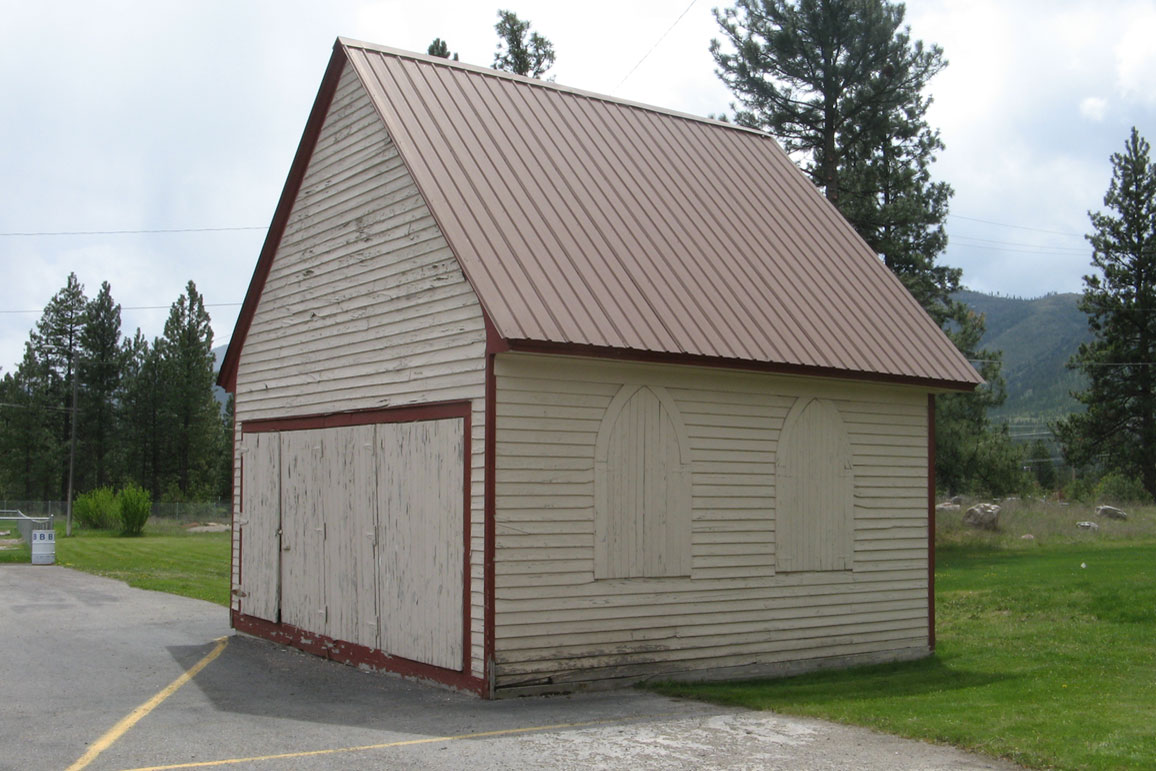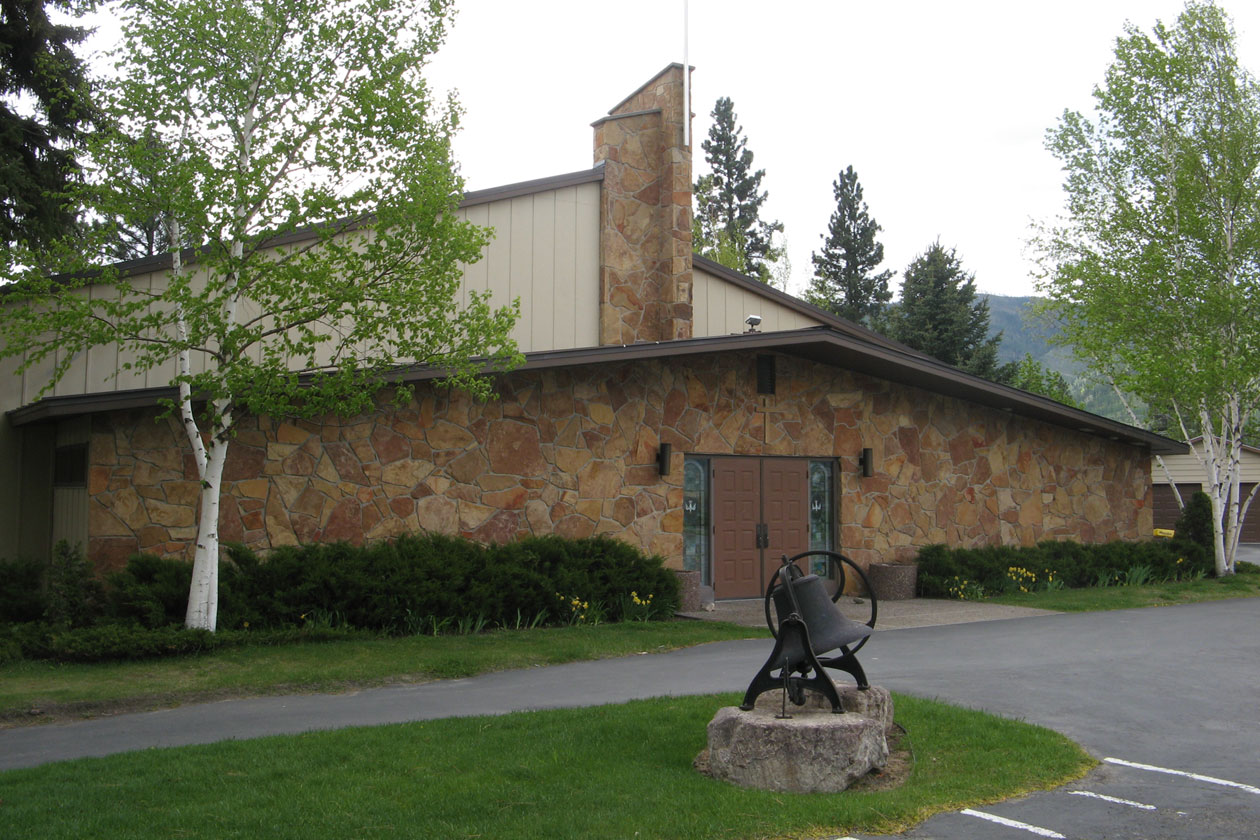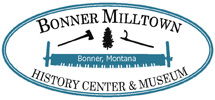 Part of the original church Rooted in its history of serving French Canadian loggers and millworkers at the start of the 20th century, St. Ann continues to serve new generations of parishioners in much different times in the 21st century.
Part of the original church Rooted in its history of serving French Canadian loggers and millworkers at the start of the 20th century, St. Ann continues to serve new generations of parishioners in much different times in the 21st century.
The Bonner mill had been operating nearly 20 years when the Catholic Church was built across the road on land donated by ACM. Beginning in 1905, St. Ann was a mission of St. Francis Xavier in Missoula. Fr. Lawrence Palladino of St. Francis Xavier described the Bonner parish “…where some forty Catholic families, mostly French Canadians, are living, the men being generally employed in the saw and planing mills and sash factory established in that locality.”
Architect A.J. Gibson designed the church. The same plans were used to build Woodman School. Today a part of the original church building serves as a storage shed for Bonner School.
After three years, St. Ann was removed from the St. Francis Xavier parish and attached to the St. John the Baptist parish of Frenchtown. Local historian Kim Briggeman writes of the change: “There were probably at least three reasons St. Ann was annexed to Frenchtown: St. Francis Xavier was being stretched to capacity as a growing Missoula’s lone Catholic parish; the French language bound Frenchtown and Bonner together, and Father LeGris had a car and he knew how to use it.”
At St. John the Baptist, Fr. LeGris preached in French. It’s not known, but very possible, that the monthly services at St. Ann were also in French.
In 1923 St. Ann became a mission of St. Anthony’s in Missoula and 17 years later, St. Ann became a parish in its own right. On October 1, 1938 Father John J. Connolly came from Helena to be the administrator. By June 10 of 1939 ground was broken for a bigger church, which was completed in 1940.
Church life continued and flourished. Vatican reforms in 1964 introduced English into the services. In the ‘70s Tuesday nights were set aside for religion classes in conjunction with the neighboring Lutheran Church. The church served approximately 120 families in Bonner, Turah, Clinton, Potomac, and Piltzville.
“In the early morning hours of January 2, 1985, fire broke out in the second St. Ann church…. A clock behind the altar was stopped at 1:45 a.m,” writes Kim Briggeman. The fire destroyed the altar, the sanctuary and the hall. Smoke and water damage affected other parts of the church. St. Ann, 2009 For 21 months, Catholic masses were held next door at the invitation of parishioners of Our Savior’s Lutheran Church. The parish members spent several months deciding what to do; ultimately they decided to demolish the old building and start anew. Finally, on Saturday, September 27, 1986 the first mass was held in the new church although construction wasn’t complete. The building was dedicated on December 7, 1986. In addition to church dignitaries, members of Our Savior’s Lutheran Church were special guests.
St. Ann, 2009 For 21 months, Catholic masses were held next door at the invitation of parishioners of Our Savior’s Lutheran Church. The parish members spent several months deciding what to do; ultimately they decided to demolish the old building and start anew. Finally, on Saturday, September 27, 1986 the first mass was held in the new church although construction wasn’t complete. The building was dedicated on December 7, 1986. In addition to church dignitaries, members of Our Savior’s Lutheran Church were special guests.
As part of the centennial celebration on September 10, 2005, the stained glass windows, saved after the devastating fire of 1985, were polished and displayed in the new church, another link from the past to the present.
